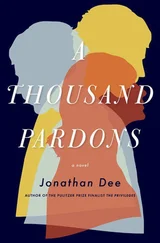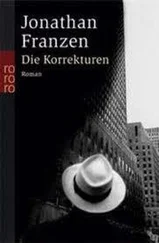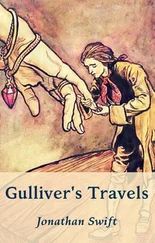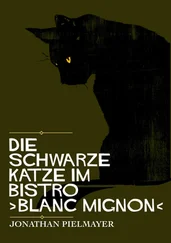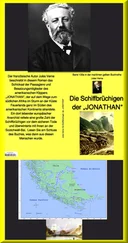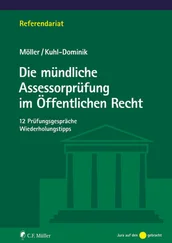“I like your neighborhood,” Osbourne said quietly, watching the four- and five-story row houses go by. “What is it called?”
“Cobble Hill,” John said; and then, when nothing more followed, “My … my girlfriend and I bought our apartment here just a couple of months ago.” Girlfriend seemed such a juvenile word, John thought, but fiancée was not strictly accurate, and lover was just out of the question.
“Probably a real family neighborhood?” Osbourne said. “Lots of kids? That’s why you chose it?”
This would have seemed almost aggressively intimate, except nothing in Osbourne’s manner showed that he considered it anything but small talk. “Well,” John said, “that wasn’t — I mean, we’ve talked about that, and of course at some point—”
“Listen,” Osbourne said earnestly, and turned to look into John’s face for the first time. “I’m sorry about the car. I really don’t ride around in limos, you know, especially not on my days off. I love to drive. I would have been happy to drive us around myself. It’s not the driving, it’s the parking; and where we’re going, downtown, you can squander half an hour just looking for someplace to leave your car. So just in the interest of time, we engage Max here to circle. You understand, don’t you?”
“Really,” John said, “it’s quite all right.”
Max maneuvered across the empty lanes of the entrance ramp and on to the Brooklyn Bridge. It was mostly truck traffic at that hour. John looked up through the window at the rhythmic, cathedral wave of the cables. The sky between the lines was low and colorless.
They spent ten minutes traversing clogged Chambers Street; Osbourne said nothing but displayed no impatience either, content to stare out his tinted window at the pedestrians, who stared back inhospitably though they couldn’t see him. Then the limo turned north and slowly nosed its way through the narrow lanes of Tribeca. Vacant sidewalks and shuttered buildings and their quiet limousine. John knew these street names but could never have given directions on how to find them, even after five years in the city. The strategy he had carved out for himself this morning was to manifest comfort in his role as a subordinate, to offer opinions only when asked directly, to patiently play himself down: but such a thoroughgoing silence had permeated the car again that John, remembering he was with one of the name partners, now wondered if it might not behoove him to ask a few questions, to show some initiative, whether he felt like it or not.
“Do you always have this same driver?” he said. “He seems to know the neighborhood very well. If you asked a cab driver to take you to one of these streets, odds are he couldn’t do it.”
Osbourne turned his head just long enough to smile indulgently and nod. He went back to watching the buildings. The modern elements — galleries, boutiques, sometimes a restaurant — fell like silt to the level of the street, while it was easy to imagine the upper floors as abandoned, or occupying a different time.
Well, that was suave, John told himself witheringly.
They pulled up in front of an old six-story warehouse, unretouched on the outside since its days of commercial use; the outer door bore only a large, painted “76” on the frosted glass. “Here’s our first stop,” Osbourne said, unnecessarily. The driver stayed behind the wheel, and the two men let themselves out. The sidewalk was narrow and canted visibly toward the street. Between the outer and the inner door of the building was a graying patch of black and white mosaic tile, a few discarded post office flyers, and an amber St Ides bottle. Wheelwright pressed an unmarked buzzer. A few moments later, they were incautiously buzzed inside.
They walked upstairs in silence; John thought it would only have been polite of Osbourne to mention what floor they would be stopping at but resisted the urge to ask. His boss walked very fast, he noticed, eager to feel he was noticing something.
At the fifth-floor landing one door was left ajar; Osbourne knocked softly and pushed it open. Behind it was a vast, low-ceilinged rectangle easily twice the size of John’s whole apartment. The air-conditioning was on full blast, and shades were drawn over all the windows. In one corner of the loft was a large kitchen area, with a stove and two refrigerators, and a young man making espresso or cappuccino. The woman who came to greet them was long-limbed and gorgeous, and John was guilty of assuming she had to be one of the artist’s assistants; but no, she was the artist, though Osbourne introduced her to him only as Heather.
“Heather, this is my associate, my resident art expert, John Wheelwright.” Ill at ease, John bowed slightly; Heather gave him her hand, then hung it casually on Wheelwright’s near shoulder and left it there.
By that time one of the assistants had completed his walk across the broad floor to ask if the visitors wanted any sort of coffee. “By all means, bring us a couple of espressos,” Osbourne said. He seemed energized since walking into the loft. “I could use something to warm me up in here.” He and Heather both laughed, then turned to walk deeper into the room; and John, wondering more than ever if his presence was really wanted, followed a step or two behind them.
The first sculpture they stopped in front of was easily recognizable as a nude self-portrait of a seated Heather, but it took a few moments more for John to identify the medium: dark chocolate. It certainly explained the need for the air-conditioning and the window shades, which he had assumed were merely eccentricities. The chocolate figure, a little less than life-sized (though he could tell that only from having the model herself standing unself-consciously nearby), was seated with its hands clasped around one knee. Bending forward a bit in the dim light, John could see, on the figure’s elbows, toes, one breast, and again just at the end of the jawline beneath the ear, teethmarks, as if the sculpture had been gnawed at by someone. Well, not as if , John realized; it had been gnawed at, and he wondered whose job this was — the artist herself, or one of the male assistants. He couldn’t decide which answer presented the more arresting mental picture.
While John was gazing at the self-portrait, Osbourne and Heather moved a few feet away to a large, perfect cube, also made of chocolate, also with one of its sharp corners degraded by someone’s having eaten at it. They stood before it, talking softly. John was about to trail after them when one of the assistants appeared with his espresso.
“Shocking, isn’t it?” the man said, glancing discreetly at the nude. He himself was young and somewhat potbellied, with hair brush-cut to a kind of tennis-ball fuzz; he wore an oversize black turtleneck.
John wanted to ask about the gnawing — not just who initiated it, but whether it was meant as the start of a process, whereby the work of art was distorted and eventually consumed entirely by the owner, or the artist, or the museumgoer — but, even though he had a hunch that these were the very questions the chocolate sculpture was meant to excite, he was worried about inadvertently coming off as mocking or contemptuous.
“She’s found the perfect medium here, for the expression of her themes,” the assistant went on, in a soft voice. “The degradation of women, the violence inherent in our culture’s images of women, the whole consumer idea.” He made quotation marks with one hand; the other still held John’s espresso. “And of course the fragility of the work of art, its impermanence, its vulnerability.”
John was reminded by this speech that the casually dressed young man was at work, and that he himself was seen now as a prospective buyer, or at least assistant to a buyer. Unable to ask the questions he most wanted to ask, about technique — they seemed at once too simple and too intimate — he asked instead, “Tell me, how do you — if one buys the sculpture, say — how does one warehouse something made out of chocolate?”
Читать дальше




